15 Little Known Facts About Coca-Cola
Coca-Cola is one of the oldest, largest and most successful multinational
corporations. Recent sales data shows total revenue figures that surpass $45
billion and net income exceeding $8 billion year after year. Marketing experts
applaud Coke's unsurpassed brand notoriety and today Coca-Cola stands as perhaps
the world's most recognized brand. The company and its success evoke a wide
range of emotions that depend on who you ask and what country they live in.
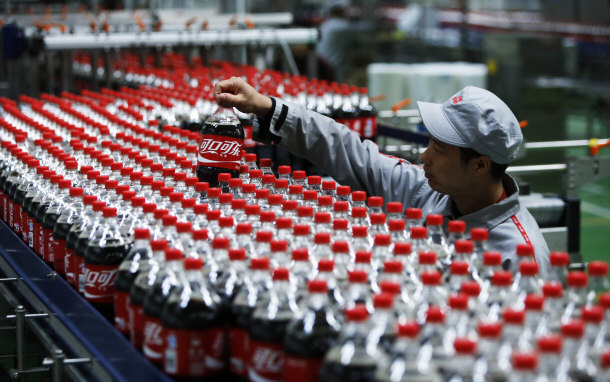
Some love their products and see the company's ability to cross international
borders as a positive aspect. Others see it as a form of geopolitical dominance
and as just a another way American culture is permeating the far corners of the
world. Regardless of how people may feel about the corporation, Coca-Cola’s
story is indeed an interesting one. The company's humble beginnings can be
traced back to the year 1886 when pharmacist Dr. John S. Pemberton, through
simple curiosity, developed the first version of Coke that was available for
purchase.
John Pemberton
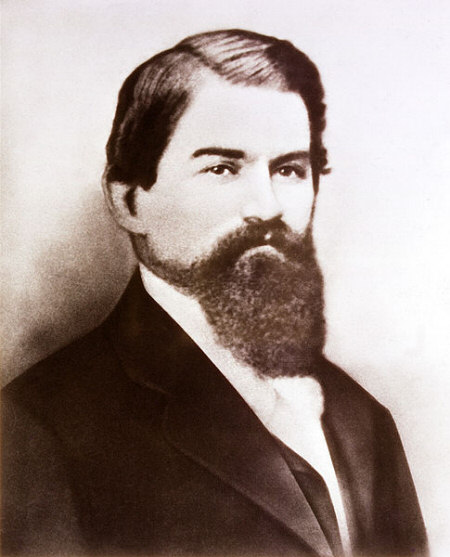
Over the years a number of interesting and surprising facts about the company
have emerged.
15) The Very
First Coca-Cola Outdoor Advertisement Is Still Around
The very first ever Coca-Cola billboard dates way back to the 1800s. It was in
1894 when a Coke salesperson James Couden had a Coca-Cola sign painted on a wall
of the Young Brothers Pharmacy. Despite the historical significance of the ad,
it was ultimately painted over numerous times in the years that followed.

Realizing the cultural relevance of the advert, the original billboard was
restored. This involved the painstaking process of removing the numerous layers
of paint that had covered it. This was finally achieved in 1990. A total of 25
layers of paint had to be removed, before the original ad was finally revealed.
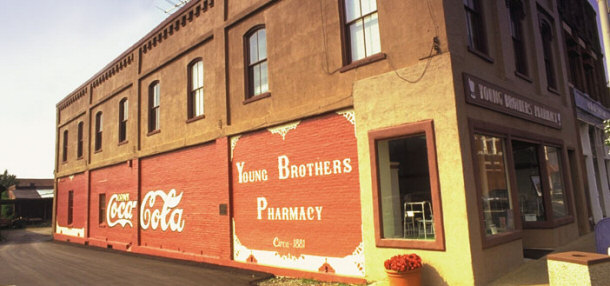
14) Even Diet
Coke Outsells Pepsi
The war between the Coca-Cola Company and Pepsi has been well documented
throughout the years. In 2009, the battle took an unusual and unexpected turn,
when sales of Diet Coke began competing with the sales of regular Pepsi.
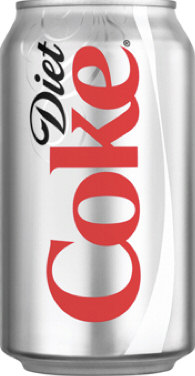
Traditionally, Diet Coke has been considered an inferior product to regular
Coke. It was a product designed specifically for health conscious customers, who
were willing to sacrifice quality for health. With this in mind, Diet Coke was
never expected to really compete with regular Pepsi.
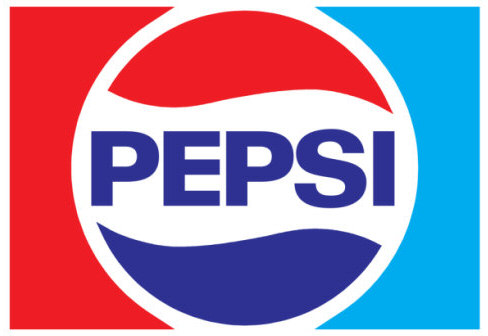
Still, in 2009 sales for Diet Coke were equal to those of regular Pepsi. The
following year, Diet Coke actually outsold regular Pepsi.
Historically, Coke has always been ahead of Pepsi in terms of sales. In fact,
people typically buy twice as much Coca-Cola every year than Pepsi. 2010 was the
first time that even Diet Coke dominated Pepsi. For whatever reason, Pepsi has
never been able to come remotely close to the kind of popularity Coke has always
enjoyed.
13) Coke Zero
and Diet Coke Are the Same Basic Drink
The Coca-Cola Company has tried a number of new lines of drinks over the years.
Usually, the lines feature the addition of a specific flavoring. Some of the
most notable lines include Vanilla Coke and Lime Coke. Although these
experimental lines typically prove to be great novelties, they are rarely
success stories. Of the alternate Coke lines, two of the most popular ones that
ultimately became regular lines are Diet Coke and Coke Zero. Perhaps the success
of the lines, where others have failed, is due to the fact that very little
separates the two drinks.
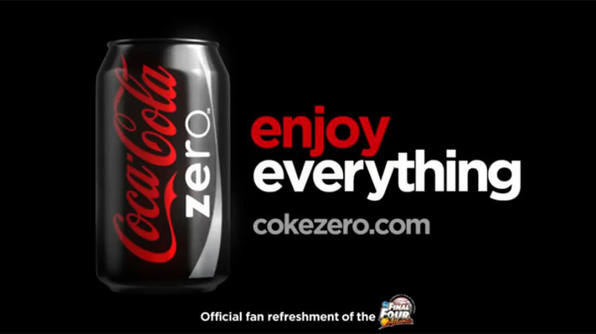
In reality, although Diet Coke and Coke Zero are marketed quite differently,
the ingredients for the two products are almost exactly the same. The only
difference between the lines is the sweeteners used for either product.
Ironically, one of the biggest differences between the two lines is that the
average serving size of Diet Coke has more calories than Coke Zero.

Besides the different sweeteners used and the slight difference in the
calorie count, the biggest difference in the products is really just the
marketing. Diet Coke has always been targeted towards health conscious women.
With the increased emphasis on men’s health over the past decade, Coke Zero was
released in order to corner the market for men concerned about their weight.
Basically, the Coca-Cola Company realized that men were typically unwilling to
be seen drinking Diet Coke.
12) Coca-Cola
Was the Biggest Company in the World
Since branching out into the international market, Coca-Cola has been a huge
global brand. The company was so big that it managed to reach the heights of
being the world’s biggest company.
Coca-Cola Headquarters in Atlanta, GA
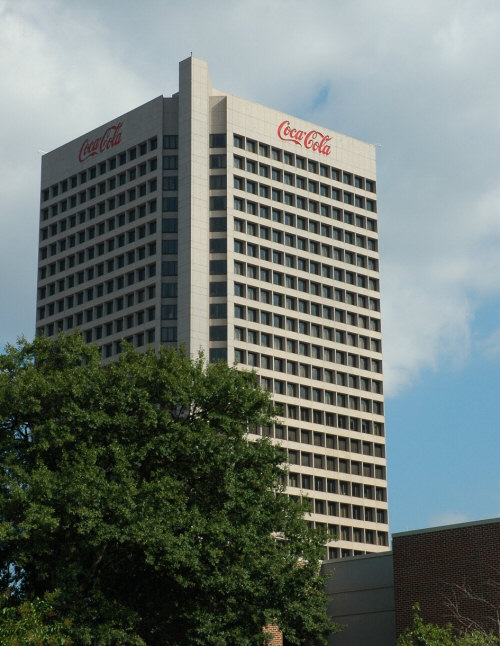
By Autiger
from Wikimedia Commons
It wasn’t until the late 2000s that the Coca-Cola Company’s dominance in the
marketplace slipped. The search engine Google and department store chain
Wal-Mart managed to overtake Coke in the market.
11) Coke Had a
Curvy Can
In 1997, the Coca-Cola Company introduced a contoured aluminum can. The can was
specifically designed to echo the iconic design of the signature curvy Coke
bottles. The designers had hoped that the can would prove to be just as iconic
as the bottle and significantly distinguish it from the other soda cans on the
market.
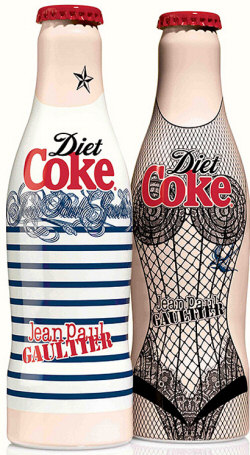
The idea never eventuated, though. The can was briefly released into the
market. However, the Coca-Cola Company ultimately opted against introducing the
distinctive cans permanently.
10) Coke Had an
Unusual Problem Launching Their Product in China
It was back in 1928 when Coke was released in China. Before the Coca-Cola
Company could launch the product, though, they had to do some serious research.
They had to carefully consider the inherent dangers of the name of their product
being lost in translation. Specifically, the Coca-Cola Company had to find a way
for their unique name to be represented through characters of the Mandarin
language.
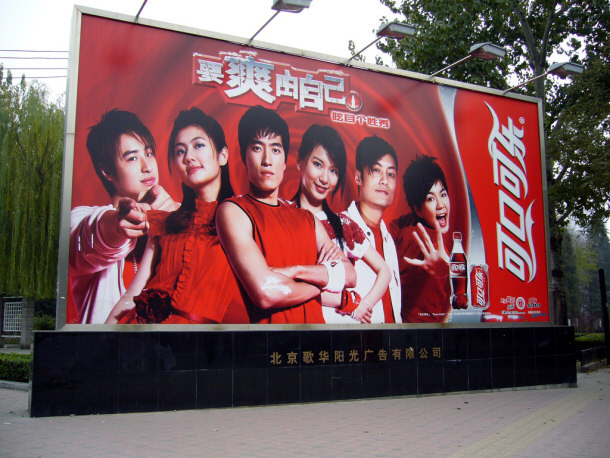
The company had 200 different Chinese characters to choose from. There
objective was to find characters that would be pronounced “coca-cola” and
actually mean something positive. The problem was that the combination of
characters that made up the name Coca-Cola didn’t make sense.
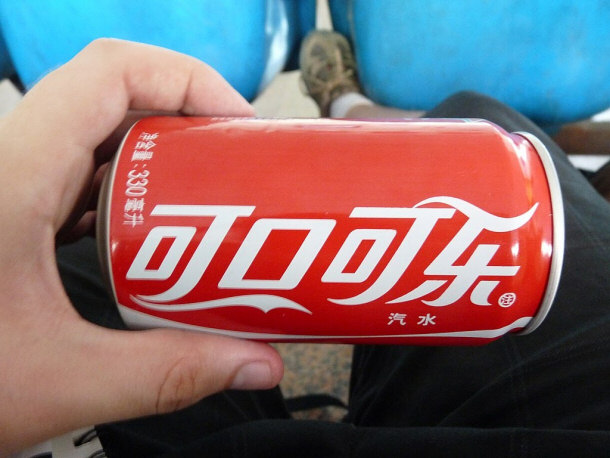
Consequently, numerous Chinese shopkeepers came up with their own
combinations of characters to produce the company name. Many of the combinations
were intentionally inappropriate. In a number of cases, the drink was likened to
wax. Ultimately, the Coca-Cola Company landed on a combination of characters
that roughly translated to describe Coke as a drink that made a person’s mouth
rejoice.
9) Only Two
Coca-Cola Executives Know the Recipe for Coke
There is a popular myth that has circulated for years that there are only two
executives of the Coca-Cola Company that know the secret ingredients to the Coke
recipe. The myth has it that each of the executives only know half of the
recipe. This is to ensure that no one person could ever release the entire
secret recipe to the public or competitors.
The rumor isn’t true, but there is actually some truth to the story. The
truth is that there are only two executives who know the true recipe. They both
know the recipe in full and the recipe is kept in a vault.
Muhtar Kent (Coke Chief) Inside the Vault

In reality, the reason that the company has this unique policy probably has
more to do with self promotion than anything else. Even if competitors did get a
hold of Coke’s recipe, people would still buy Coke because it is the brand that
people buy not the drink itself. The policy of the two executive is really just
about hyping the product as being something super special.
8) Coca-Cola
Isn’t the Best Selling Soda Everywhere
It goes without saying that Coca-Cola is incredibly popular. In fact, it is the
most popular soda in the world. Still, it isn’t the best selling soda in every
country, though. It is the second best selling soda in Scotland. Coca-Cola
certainly is popular in Scotland. It just isn’t the most popular soda in the
country. Rather, it’s a very close second to a local brand of soda called
Irn-Bru. The history of Irn-Bru goes back more than a hundred years. It is known
and loved throughout the UK.
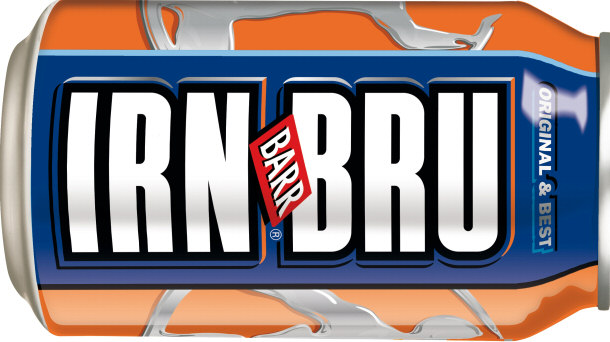
The Middle East is another area in world where Coca-Cola isn’t the best
selling soda. Rather, Pepsi is. The reason for this has to do with politics.
Coca-Cola wasn’t originally available in Israel. This led to accusations that
Coke was anti-Semitic. Consequently, Coke was boycotted by Jewish-Americans. In
response to the criticism, Coke opened a plant in Tel Aviv in 1966. However, the
company was then boycotted by the Arab League. Consequently, Pepsi took over the
Middle East market – all except the Israeli market.
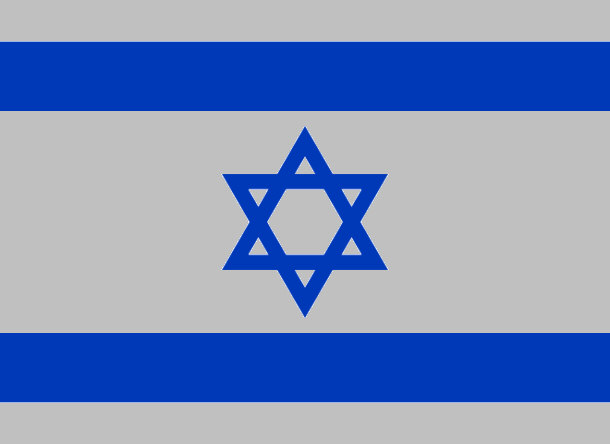
The Arab League’s boycott of Coke lasted until 1991. By the time the boycott
ended, Pepsi well and truly had the market in the Middle East cornered. Coke has
since made some impact in the Middle East. They have won over a significant
number of customers in the area. Still, the Middle East is the only place in the
world where Pepsi is well and truly on top of the market.
7) Coca-Cola
Campaigned Against Water
Over the years, the Coca-Cola Company has had a number of unique campaigns to
encourage people to consume their product. Sometimes the strategies have been on
the unusual side. One of the most unusual campaigns was their H2NO campaign,
which saw the company take on water.

By Brett Weinstein
from Wikimedia Commons
Back in 2001 the Coca-Cola Company set about convincing restaurant customers
who would typically just want water to drink to have Coke instead. The H2NO
campaign involved the Coca-Cola Company instructing restaurant waiters to
convince people to order Coke to drink. The campaign even involved Coke training
waiters in the art of suggestive selling techniques.
The campaign came about because the Olive Garden restaurant chain had been
having issues with most of their customers simply wanting water to drink with
their meals. When the Coca-Cola Company heard of this problem, they saw a
potential win-win situation.
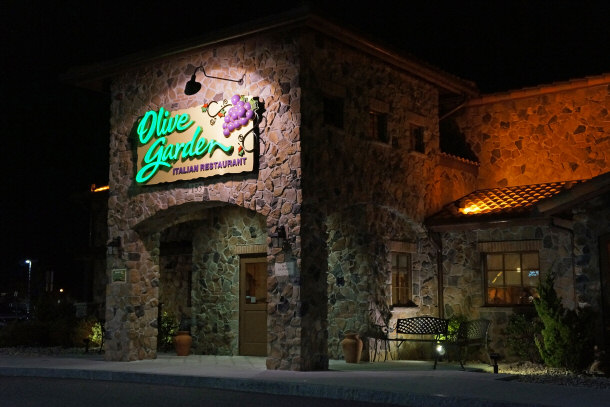
By Anthony92931
via Wikimedia Commons
The campaign actually proved to be quite successful. At least, it was until
news broke of the campaign through the New York Times. At this point the
Coca-Cola Company withdrew the campaign from the restaurant chain.
6) Coca-Cola
Invented a Vending Machine that Increased Prices On Hot Days
Like any successful business, the Coca-Cola Company has always looked into any
and every possible way that they could turn a profit. One particularly inventive
way that the company considered was through specially made vending machines.
These machines would have fluctuating prices for the drinks inside.
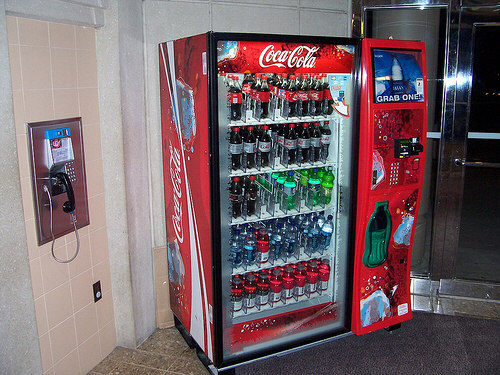
When the temperature outside was cold, the drinks inside would be relatively
cheap, as demand for the beverages would be low. When it was a hot day, though,
the prices for the drinks inside would skyrocket. Basically, the prices for the
drinks would increase with the demand for the products, given that vending
machines make most of their money on hot days.
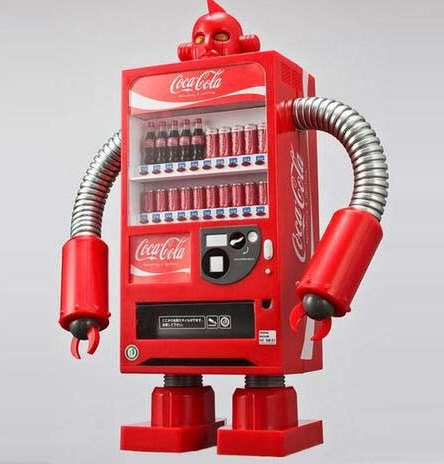
It was 1999 when news of these special vending machines came to light. It was
revealed that the company had in fact been considering the idea for a number of
years. Although the company perfected the technology, it was never introduced.
5) Coca-Cola
Has Been Consumed and Even Manufactured in Space
On the 12th July, 1985, the astronauts onboard the space shuttle Challenger made
history – when they opened and drank a can of Coca-Cola. The occasion marked the
very first time in history that a can of soda had been consumed in space.
Coca-Cola Space Dispenser
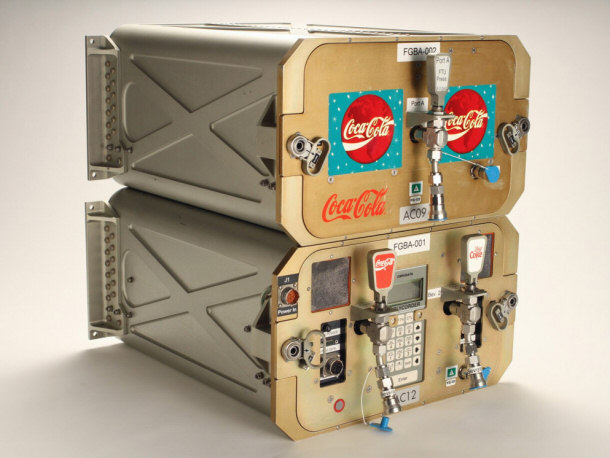
The drink in question was a specially made can that was known as the
Coca-Cola Space Can. Pepsi had produced a specially made can for use in space,
too. However, Coke’s can was selected for the honor of being the first soda can
opened and consumed in space.
The event came about after a surprisingly long and expensive period of
development. Ultimately, the can cost the Coca-Cola Company around a quarter of
a million dollars to produce. Despite the amount of time and money invested in
the project, the Coca-Cola Space Can proved to be quite disappointing. Due to
the lack of gravity in space, coupled with the fact that the can was subjected
to insufficient refrigeration, the drink was found to be extremely fizzy and
warm. Pepsi’s can was also a disappointment for the same reasons.
The Coca-Cola Company wasn’t dejected by the less than impressive results of
the space can, though. They continued with research into ways that astronauts
could enjoy their product in space. In 1995, the company developed the Fluids
Generic Bio-processing Apparatus 1 (FGBA-1). The invention was a specially made
drink dispenser that enabled astronauts to drink either Coke or Diet Coke at
their leisure.
The invention worked by dispensing Coke into a specially made cup, which was
similar to the design used for the Space Can. The cup kept the drink’s
carbonation and liquid from separating. To address the issue of refrigeration,
the invention was fitted with special cooling coils between the storage
container and the dispenser. This cooled the liquid as it was used, rather than
having refrigeration constantly running.
As impressive as the FGBA-1 was, the Coca-Cola Company attempted to improve
the design with the development of the FGBA-2 in 1996. The invention was
intended to actual produce soda in space. The invention was designed to keep
water, flavored syrup and carbon dioxide separate, until an astronaut wanted a
drink. When the astronauts wanted a drink, the machine would combine the
elements to produce the beverage.
FGBA-2
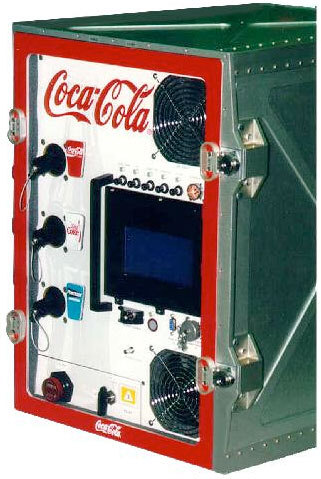
Ultimately, the FGBA-2 was a failure, as the drinks that resulted consisted
largely of foam. Nevertheless, the FGBA-1 still serves as a sound drink
dispenser. Furthermore, chances are that the Coca-Cola Company is still hard at
work on yet another way for astronauts to enjoy Coke while in space.
4) Coca-Cola
Used to Contain Beef
Coke first hit the market in 1886 but it wasn’t officially considered kosher
until 1935. This is because the original recipe for the drink actually had beef
tallow in it. Orthodox Rabbi Tobias Geffen was the first person to notice this.
He had been investigating whether the drink’s ingredients were Kosher-friendly.
His investigation ultimately led him to have an inadvertent yet significant
influence on the recipe for Coke.
After receiving a number of letters from Jewish immigrants in regards to
whether Coca-Cola was kosher and therefore fine for them to consume, Geffen
looked into the matter. He soon found that the original recipe for Coke included
glycerine made from beef tallow.
Tallow-Beef Suet After Being Rendered
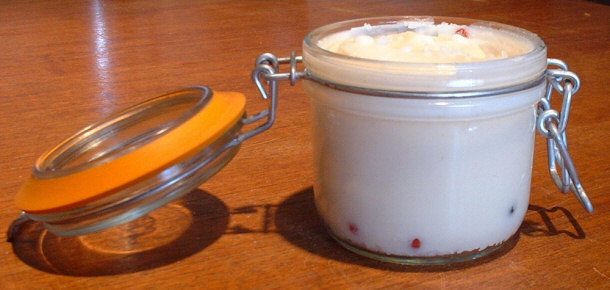
By FotoosvanRobin
via Wikimedia Commonsc
Geffen told the company that the food was unsuitable for Jewish community
members. The Coca-Cola Company responded by setting about finding a substitute.
They soon found that glycerin could be produced from coconut and cottonseed oil.
They have since continued with the alternate ingredient.
3) Coke Classic
Is Not the Original Coke Flavor
The Coca-Cola Company has enjoyed great success over the years. Typically, most
of the company’s business decisions have proved to be enormously successful and
often brilliant business moves. However, in 1985 the company made a huge error
in judgment when they stopped producing the original Coke and introduced in its
place the “New Coke”.
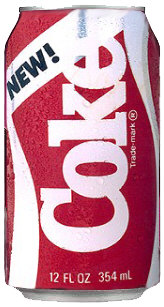
Rather than a successful move, New Coke was a huge failure. Loyal Coke
drinkers united in their disgust at the new flavor. Within three months of
releasing New Coke, the Coca-Cola Company took the product off the market, due
to the enormous backlash. They then released “Coke Classic”.
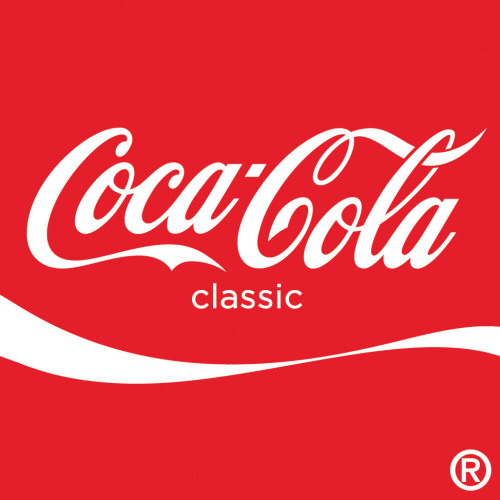
Upon Coke Classic’s release, sales for the product skyrocketed as Coke fans
bought up big, seemingly rejoicing at the return of their beloved beverage.
There was speculation that the company had intentionally made the New Coke taste
awful just to boost sales of Coke Classic when it inevitably returned. Whether
that is in fact true or not is unclear. There was definitely something unsavory
about the return of Coke Classic, though. Namely, Coke Classic was not made from
the original Coca-Cola formula.
Some Coke fans noticed the difference, though the majority of people did not.
Just what had changed was that the Coca-Cola Company had changed their recipe to
use high fructose corn syrup in place of sugar cane. The Coke that existed
before 1985 is no longer available anywhere in the world.
2) Coke Was
Intended to Treat Addiction
Most people are well aware that when Coca-Cola was invented it was intended
purely for medicinal purposes. However, something that most people are unaware
of is just why it was invent in the first place.

Coca-Cola was invented by John Pemberton. He invented Coke as a way of
weaning himself off of morphine. Pemberton was a war veteran who had been
seriously injured in 1865 while fighting in the Battle of Columbus. The need for
painkillers to deal with his injuries led to his morphine addiction. This was an
issue that many other injured war veterans struggled with at the time.
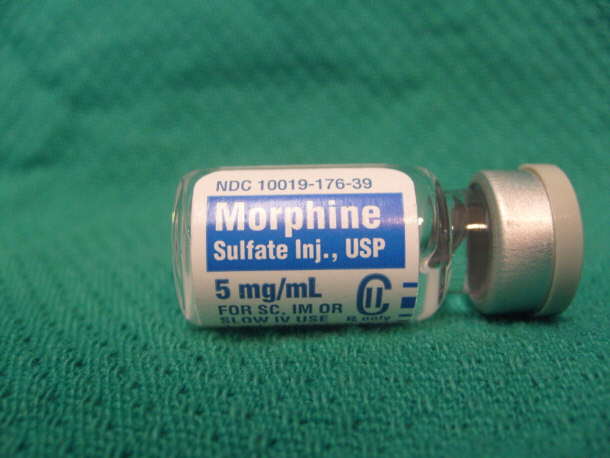
Unable to find anything that he could use as a substitute for morphine,
Pemberton ended up inventing Coca-Cola syrup. This is why Coca-Cola originally
contained cocaine, as it was considered a better alternative to morphine.
1) The Recipe
for Coke Was Discovered in 1979
On the 11th February, 2011, radio host Ira Glass announced to the world that the
recipe for Coca-Cola was discovered in 1979. The news was broken on Glass’
program ‘This American Life’.
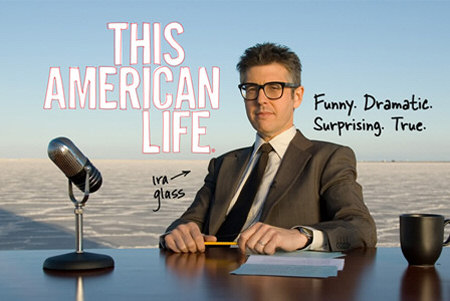
By Marcuc Brute
via Wikimedia Commonsc
Glass recounted the story of journalist Charles Salter. In the 1970s, Salter
was working for the newspaper the Atlanta Journal-Constitution. In 1979, Salter
was traveling across America when he reportedly stumbled upon John Pemberton’s
journal. The leather bound book contained the recipe for Coca Cola.
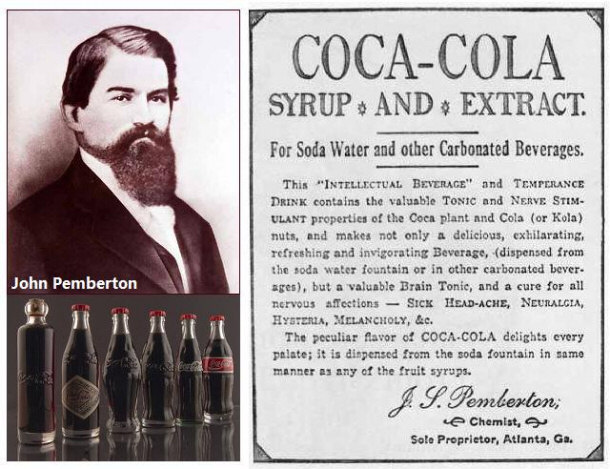
Salter detailed the recipe in a column called the "Georgia Rambler" for his
paper. However, the column was filed away in the paper’s archive and never
published. It was then forgotten. Salter’s relative never forgot about the
story, though. Many years later, Salter’s family convinced Glass to investigate
the story. Glass found enough evidence to suggest the recipe was indeed
legitimate.
Conclusion
Coca-Cola's business model depicts one of international success. It has
penetrated more foreign markets than most multinational companies and has
reached more people than most consumer products companies could ever dream.
Coca-Cola is currently sold in 200 countries which is a fantastic feet. Consider
that the United Nations is only made up of only 192 foreign nations. The
company’s success shows no sign of slowing down. They are generally willing to
try anything and everything to get ahead. There is little doubt therefore that
numerous other strange, surprising and impressive facts about the storied and
iconic company will emerge in the years to come.
Drinks
15 Surprising Facts About Soda
15 Little Known Facts About Coca-Cola
10 Surprising Facts About the History of Brewing Beer
Top 15 Best American Beer Festivals
Top 15 Coca-Cola Myths Debunked
15 Common Wine Myths and Their Realities
15 Fascinating Facts in the World of Whiskey |